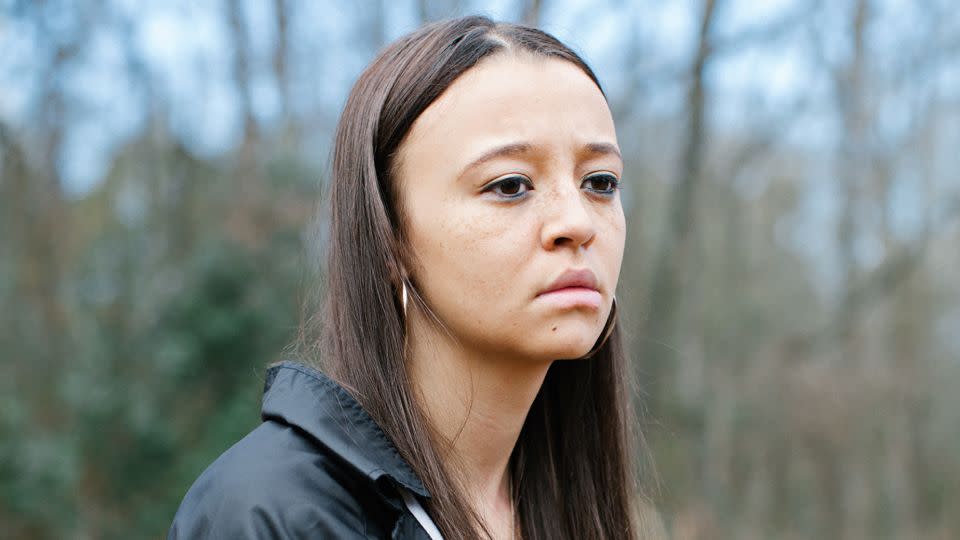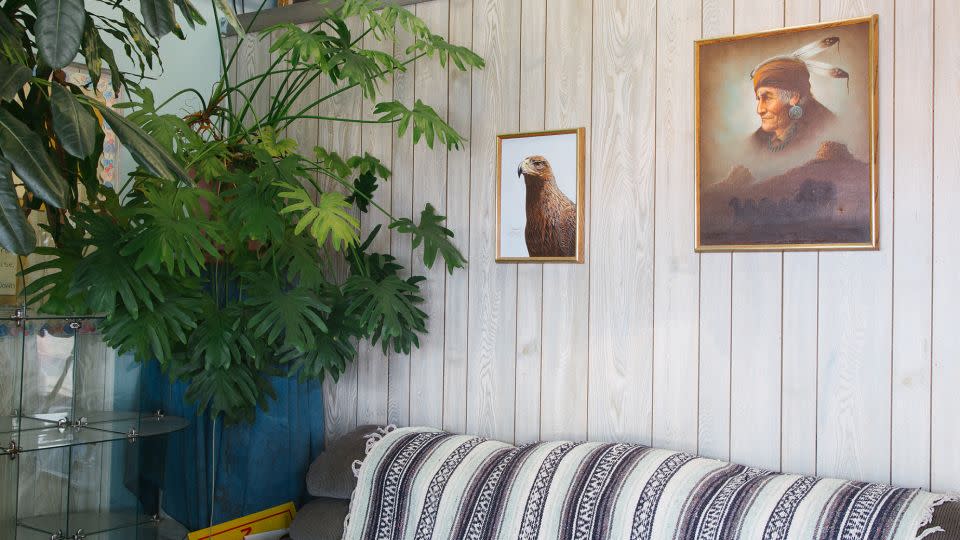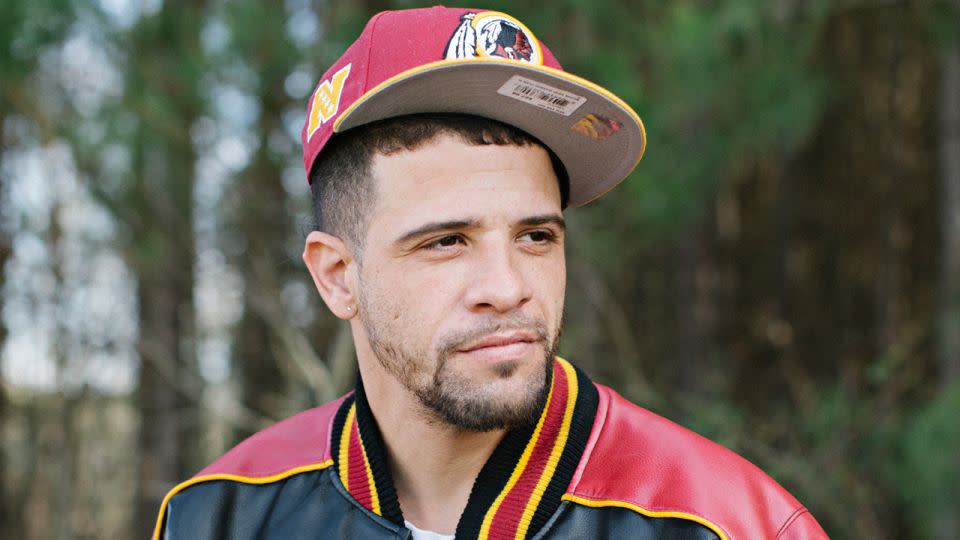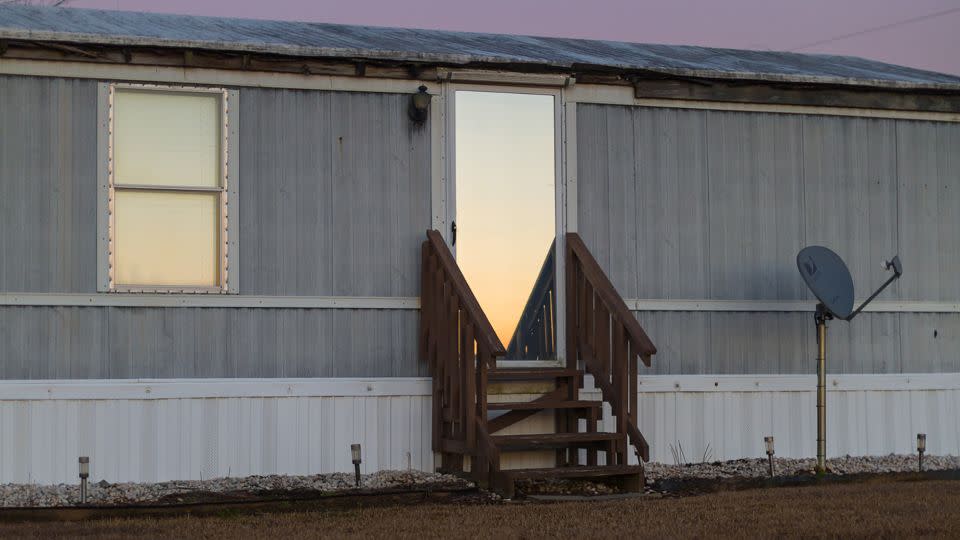These portraits show young people who are proud to be Native — even if others don’t see them that way
Editor’s Note: This feature is part of CNN Style’s series Hyphenated, which explores the complex issue of identity among minorities in the United States.
The people of Pembroke, North Carolina, don’t shy away from their Native identity.
In fact, some of them wear it on their sleeves — be it a feather-patterned blanket draped around the shoulders or a baseball cap emblazoned with the words “Native Pride.”
These kinds of markers are everywhere in Pembroke, the tribal seat of the Lumbee Tribe of North Carolina, and surrounding Robeson County, photographer Maria Sturm said. But when members of this 55,000-strong tribe venture outside their tight-knit community, they’re often told they don’t “look” Native.

That tension is at the heart of Sturm’s latest photography book “You Don’t Look Native To Me,” recently published by VOID.
Through tender portraits of young Lumbee people, combined with snippets of interview transcripts and historical text, Sturm explores what makes someone Native American. Is it race, tribal citizenship or a community you’re a part of? Who gets to decide? And what do you do when outsiders — the US government and even other tribes — don’t see you the way you see yourselves?
“It is more the way you carry yourself, and it doesn’t really matter the shade that you have,” Sturm said in a Zoom interview. “The shade that you have matters in an outside world more than it mattered in that microcosm of Robeson County.”

Questions of identity and belonging loom large for the Lumbee, the most populous tribe east of the Mississippi River.
Though the state of North Carolina recognized the tribe in 1885 and Congress in 1956 acknowledged the Lumbee as American Indians, the federal government also denied them the rights and funding afforded to other federally recognized tribes. To this day, the Lumbee tribe continues to fight for full federal recognition.
The tribe’s in-between status is a product of its history. The Lumbee have roots in various Sioux, Algonquin and Iroquois-speaking nations who migrated to modern-day Robeson County after fleeing disease, the slave trade and warfare brought on by European colonization, as historian Malinda Maynor Lowery documents in “The Lumbee Indians: An American Struggle.” Some of the Natives eventually intermarried with English-speaking settlers, as well as enslaved and free African Americans, resulting in a mixed population with a wide array of physical features.
Descendants of these groups make up the community now known as the Lumbee. Even as their culture and traditions evolved over time, and as others question their status as American Indians, the Lumbee maintained an identity as Native people.
And as Sturm captures in her photos, many young Lumbee are figuring out for themselves what that identity and culture looks like.
The project led Sturm to question her own assumptions
Sturm, who is Romanian and grew up in Germany, started photographing the Lumbee in 2011.
The project was born out of a conversation with her stepfather, who told her about his friend Jay Hansford C. Vest — a member of the Monacan Indian Nation, which at the time was unrecognized by the federal government.
Sturm kept stumbling over the word “unrecognized.” She couldn’t wrap her head around the concept: How could a non-Native entity determine whether a tribe was Native American or not? What did that even mean?

Sturm said her stepfather also mentioned that Vest had blue eyes and blond hair — a detail that prompted her to confront her own internalized notions and stereotypes about Native Americans.
“In that moment, I thought, ‘Wait a minute. I have never met a Native American person in my life. Why can he not be blond and have blue eyes?’” she said.
Sturm visited Vest at the University of North Carolina at Pembroke, where he was teaching at the time, and sat in on his classes. Thinking she would explore the issue of unrecognized tribes, she asked Vest’s students if anyone might be able to take her around their community.
That’s when she encountered Jonathan Jacobs, a Lumbee man whose musings about Lumbee culture and identity are featured prominently through the book. Through Jacobs, Sturm said she was introduced to other Lumbee and the project grew from there.

Over the course of several visits between 2011 and 2017, Sturm documented the lives of the Lumbee, gravitating toward how young people understood their identity and how they chose to telegraph that to the world.
“With the rise of social media, there was a new way of being proud of identifying yourself as Native American whereas before it wasn’t always possible,” Sturm said.
As Sturm observed, that identity is signaled, in part, through the heavily present Native symbolism. Pembroke “screams of Native American things,” she added. It’s in the roads named “Lumbee Street” and “Dreamcatcher Drive,” in the dreamcatchers hanging on the walls of homes, on cars and in tattoos. In these symbols, Sturm picked up on an implicit message.
“For me, it’s a little bit like, ‘Don’t ask me. Maybe I don’t look that way, but it’s clear. We don’t have to have this discussion,’” Sturm said.
Some might even perceive it as stereotypical — in one photo, a Lumbee man named Scottie wears a Washington Redskins jacket containing a logo that is now widely considered offensive. When Sturm asked him about it, she said he told her “this is who I am.”
“It shows that you know you are something. And because everything is stripped away … you have just these little bits and pieces that you can hold onto,” Sturm said. “I thought it’s pretty impressive that the symbols that a person like Scottie holds onto are not even original, but in a way they give him so much pride and confidence.”

The photos show how the Lumbee are redefining and asserting themselves
Throughout the book, Sturm’s subjects reflect on their personal struggles around their identity.
Kayla tells Strum about how her grandmother raised her as Lumbee, but at the same time didn’t take her to powwows and discouraged her from speaking the Lumbee dialect. As a result, she was picked on for “talking like a White girl” at home, yet is considered a “country bumpkin” when she goes elsewhere.

Jacobs, meanwhile, pushes back on the idea that the Lumbee even need federal recognition. Even though certain aspects of their culture have been lost or changed over time, he knows he is Lumbee, as do others in the community. For him, it’s all that matters.
“I’m like a billion percent sure we will never know what Lumbee language was. I’m a billion percent sure we will never know really where we came from. But that does not mean we are not Indian,” Jacobs says in the book.
It’s this sense of self-determination that has stuck with Sturm. She hopes the project will resonate with anyone who has ever had their identity questioned.
“I hope at least that many people can relate to this feeling of wanting or belonging to something, but other people are not able to see that about you,” Sturm said.
For more CNN news and newsletters create an account at CNN.com

